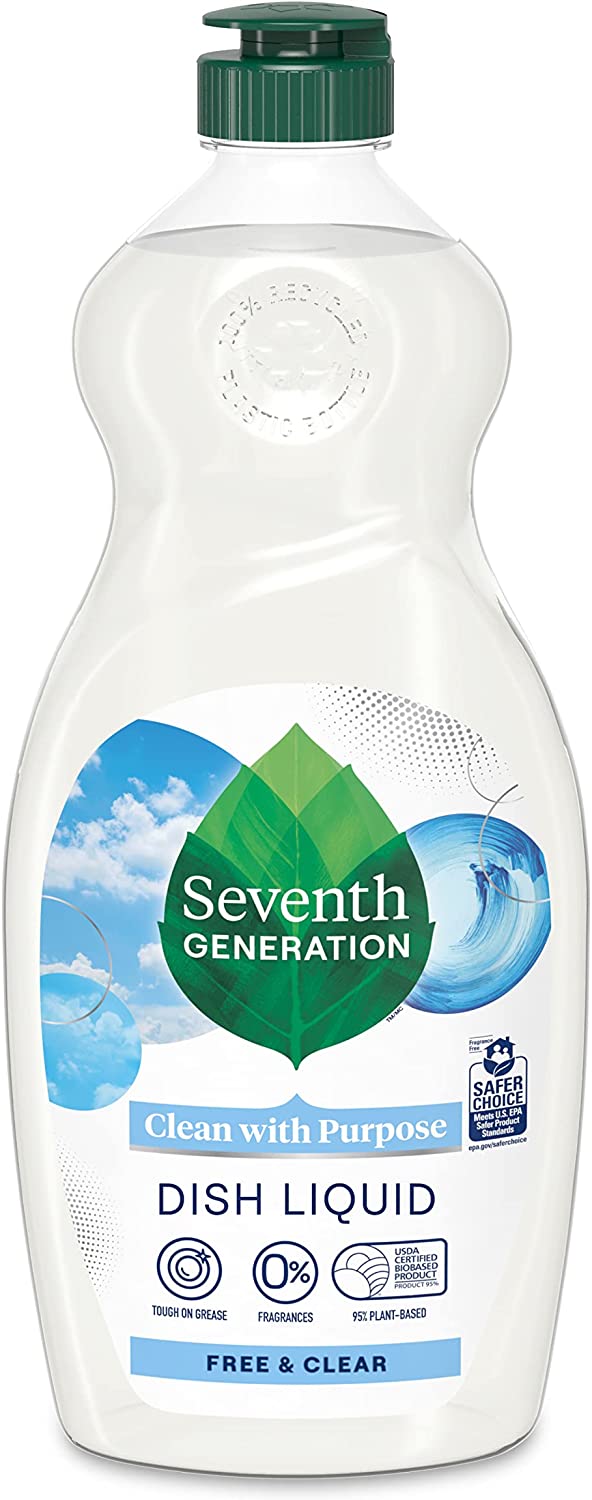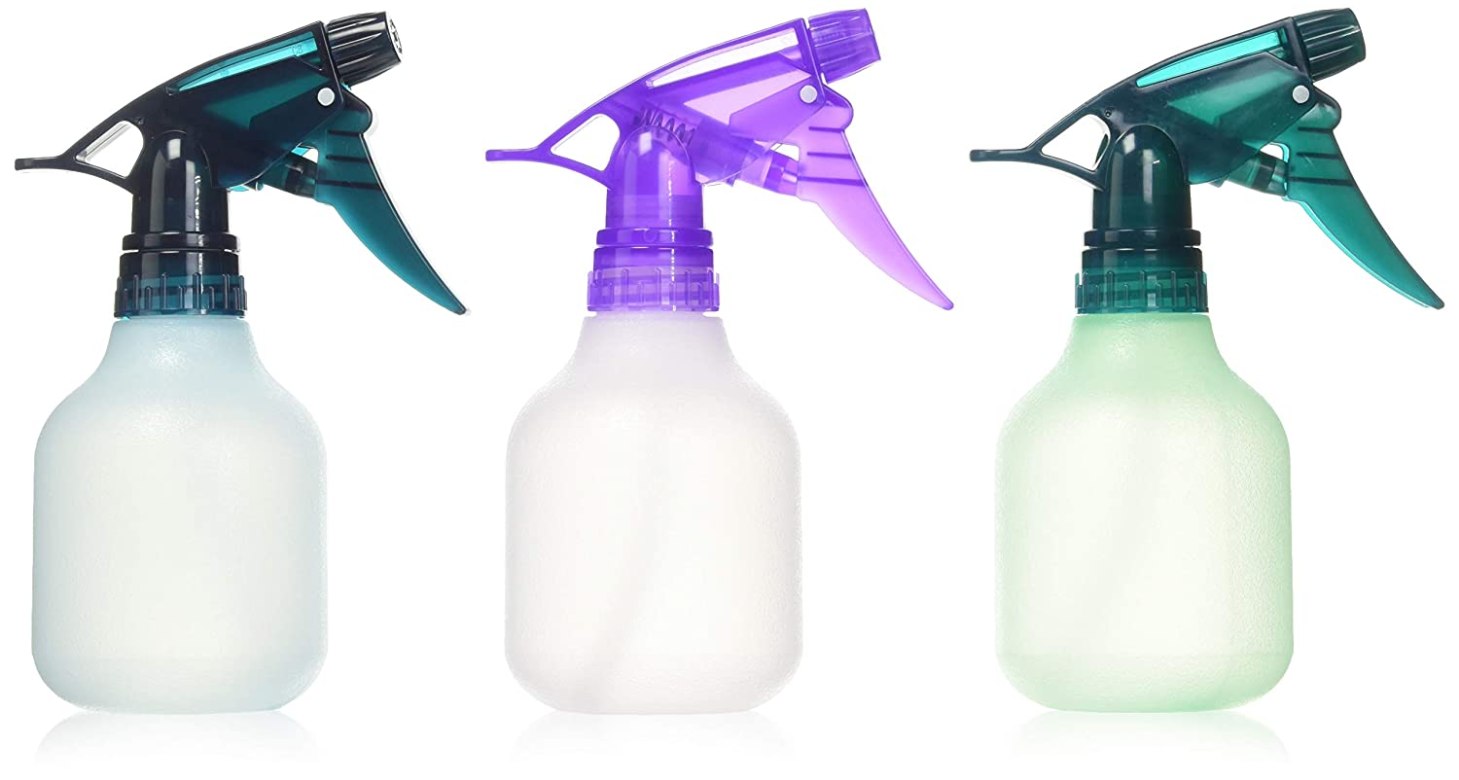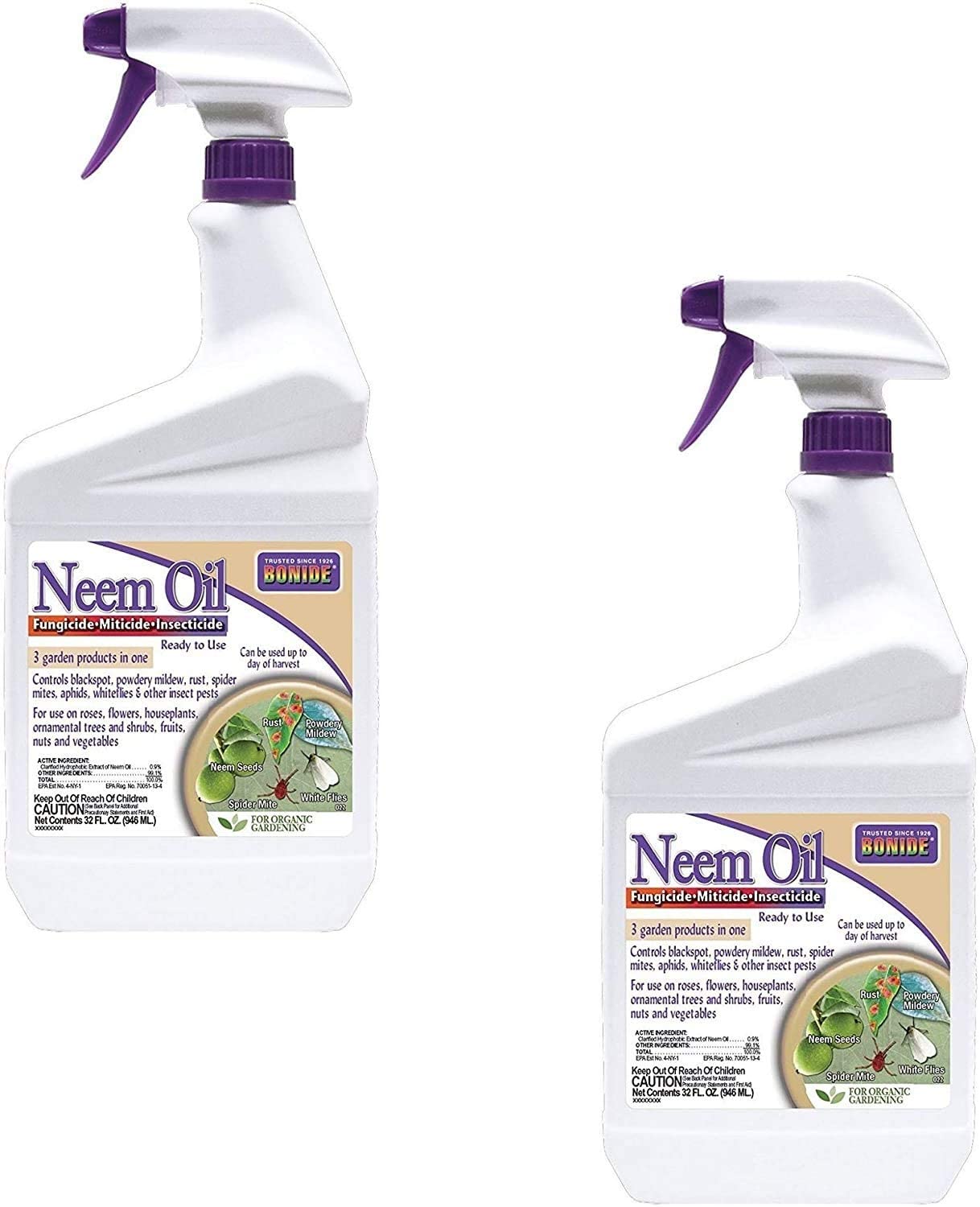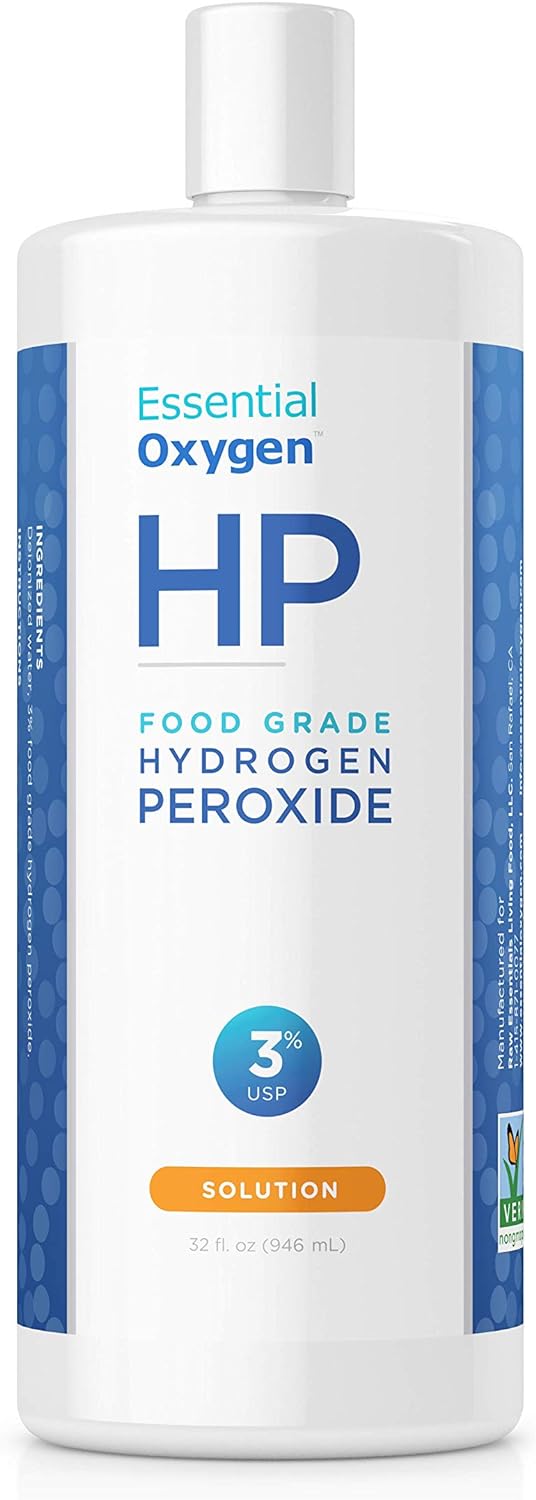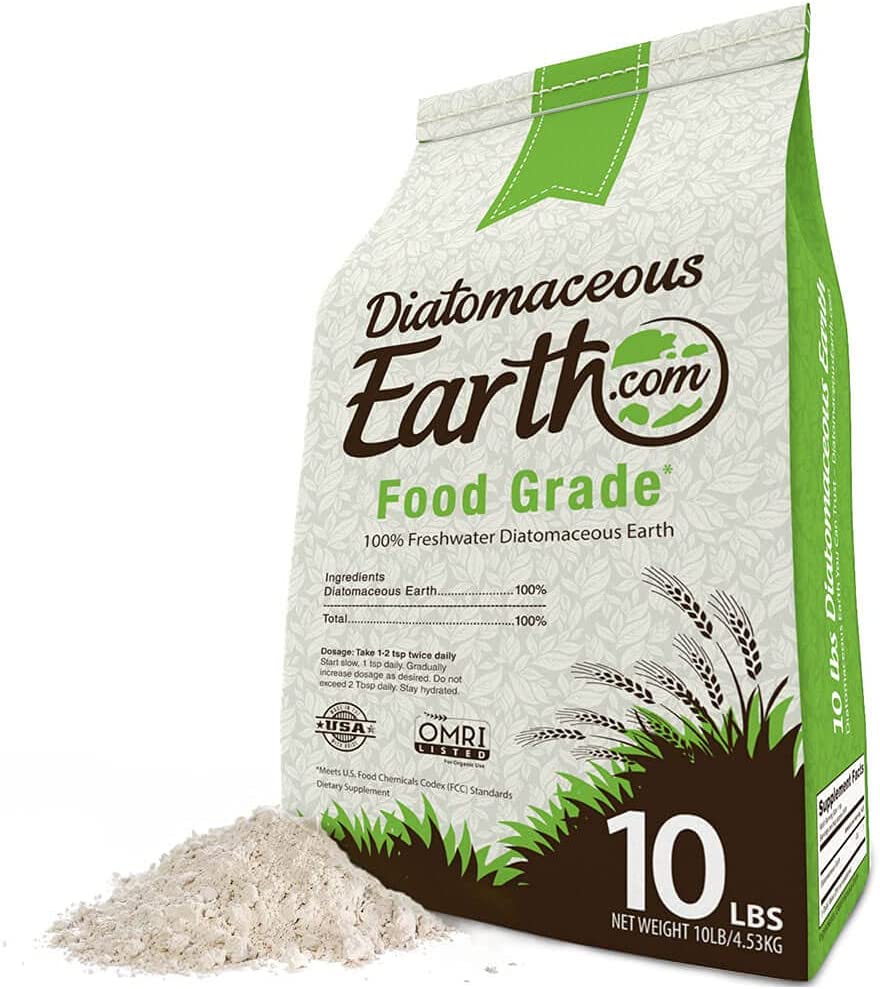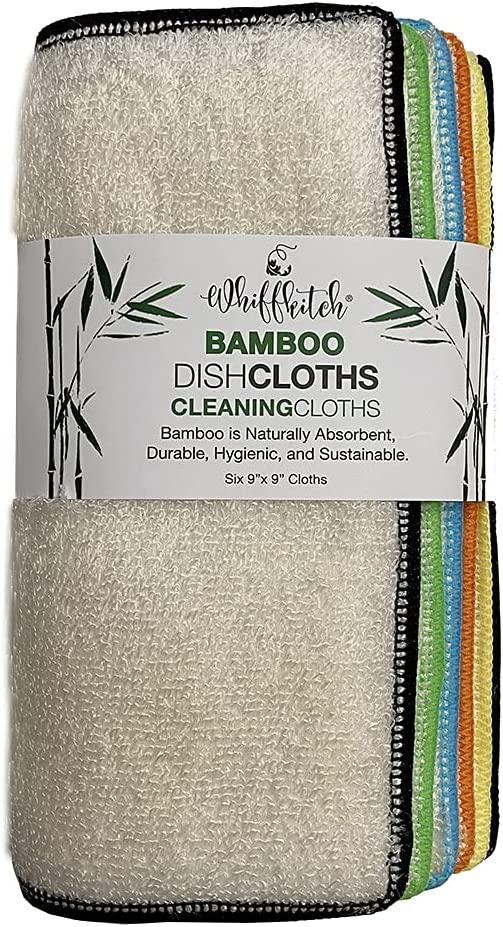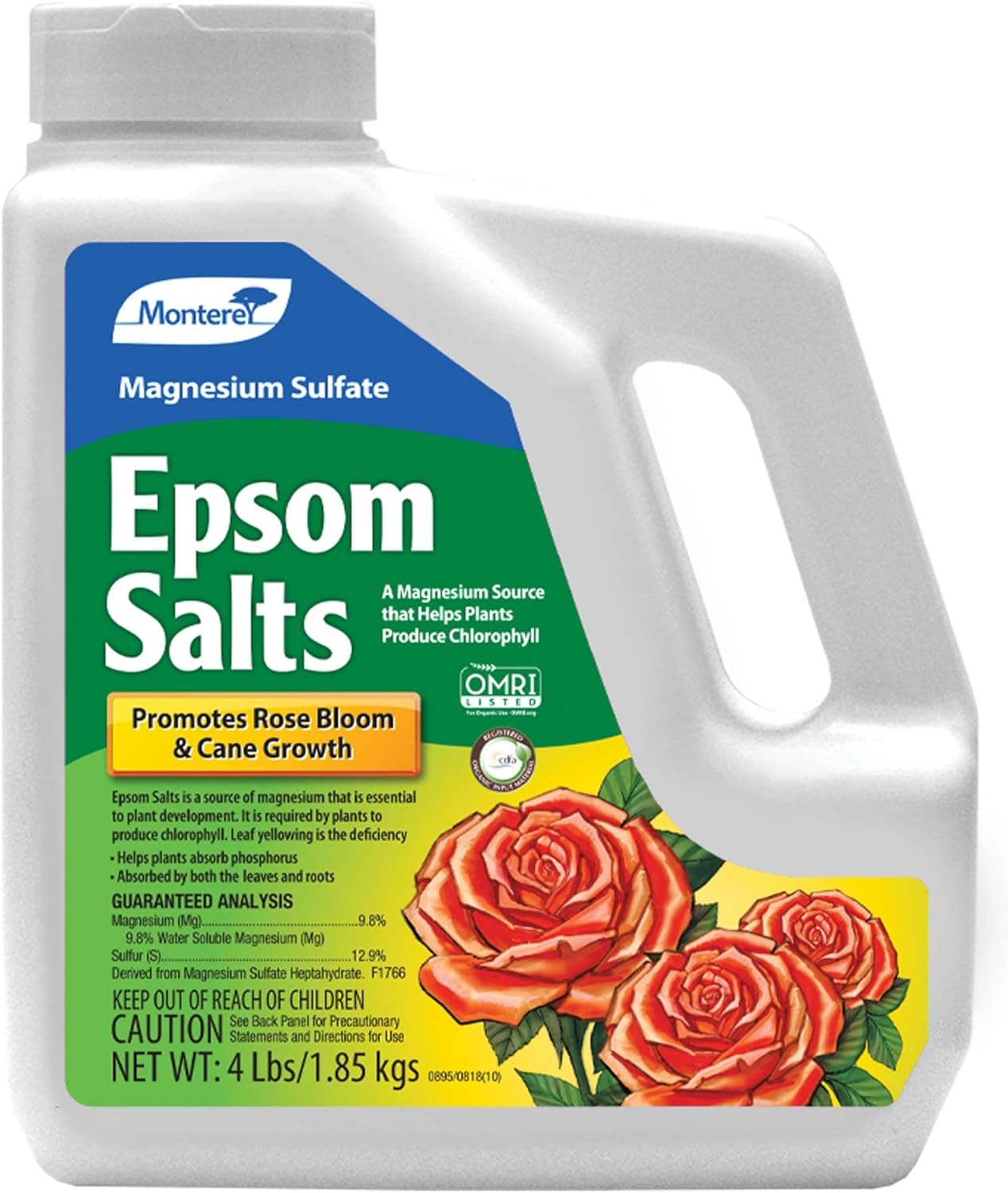How To Get Rid of Bugs on Indoor Houseplants and Keep Them Gone
- Erin Marino, former director of brand marketing at The Sill
- Jesse Waldman, former director of marketing and e-commerce at Pistils Nursery
- Jules Acree, Texas-based wellness blogger and plant expert
- Maryah Greene, plant expert and founder of Greene Piece
- Monique Leonard-Segovia, professional gardener and founder of The Brown Thumb
- Nick Cutsumpas, plant coach and urban farmer behind Farmer Nick
- Paris Lalicata, plant education coordinator at The Sill
- Susan Spanger, professional gardener and floral designer of Bloomful Floral Design
"Common plant pests include mealybugs, scale, spider mites, fungus gnats, thrips, and slugs," says Erin Marino, plant expert and director of marketing at plant company The Sill. "These pests might sound creepy crawly, but it’s important to remember these bugs are only interested in your plants—not you, your pets, or your furniture."
Even just being near greenery can boost your mood, so you want to keep your plants happy and healthy. Wondering how to keep bugs out of indoor plants? Read ahead for gardener-approved pest prevention methods, including homemade indoor plant bug sprays and non-toxic treatments for your plant's soil.

{{post.sponsorText}}
Why are there tiny bugs in my houseplants?
Plants often attract bugs when they’re in poor health or if their environment is subpar. For example, fungus gnats appear when you've over-watered your plant, and spider mites are attracted to leaves that are covered in dust.
"When your plants are stressed, they actually can attract pests," says Jesse Waldman, former director of marketing and e-commerce at Pistils Nursery in Portland, Oregon. "Poorly cared-for plants, a plant that's experiencing stress, whether that's water-stress or light-stress, or just any of those sorts of environmental factors that make your plant happy or unhappy. If it's stressed out, it's possible that it will become more likely that it will get a pest."
While pests can certainly invade an otherwise well-kept plant, pests tend to leave healthy, happy plants alone.
Common types of houseplant bugs
Identifying the type of plant pest you’re dealing with is the first step to getting rid of them for good. Ahead are the most common bugs that plague houseplants.
Spider mites

If you see some webbing on your plant and little white dots in a circle, you probably have spider mites, says Monique Leonard-Segovia, professional gardener and owner of Texas-based plant shop The Brown Thumb. “Spider mites are worse than mealy bugs–they're really hard to get rid of, and they can infest your plant really, really fast.”
Mealybugs
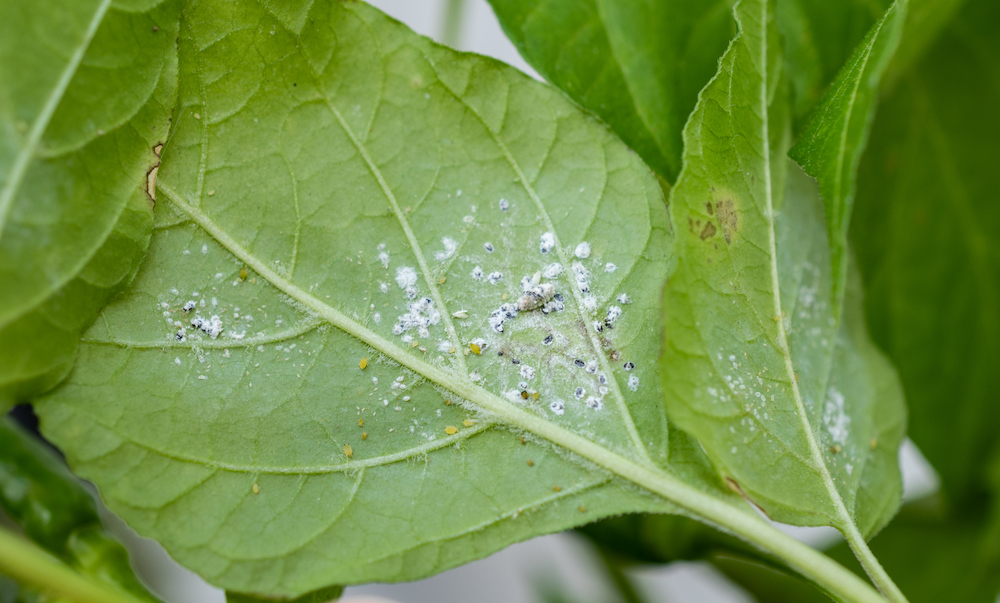
Mealybugs are small, oval white bugs that secrete sugary wax. Mealybugs love indoor plants, and since one female can lay up to 600 eggs (HUH?!), they pose a great threat to vulnerable or sick houseplants. “They’re the little white nasty bugs that you get on the back of your plants–they look like cotton,” explains Leonard-Segovia.
Aphids

Coming in several different colors, shapes, and species, aphids are a quickly-reproducing type of common bug that likes to suck the sap out of plants, causing them to droop and appear weak.
Fungus gnats
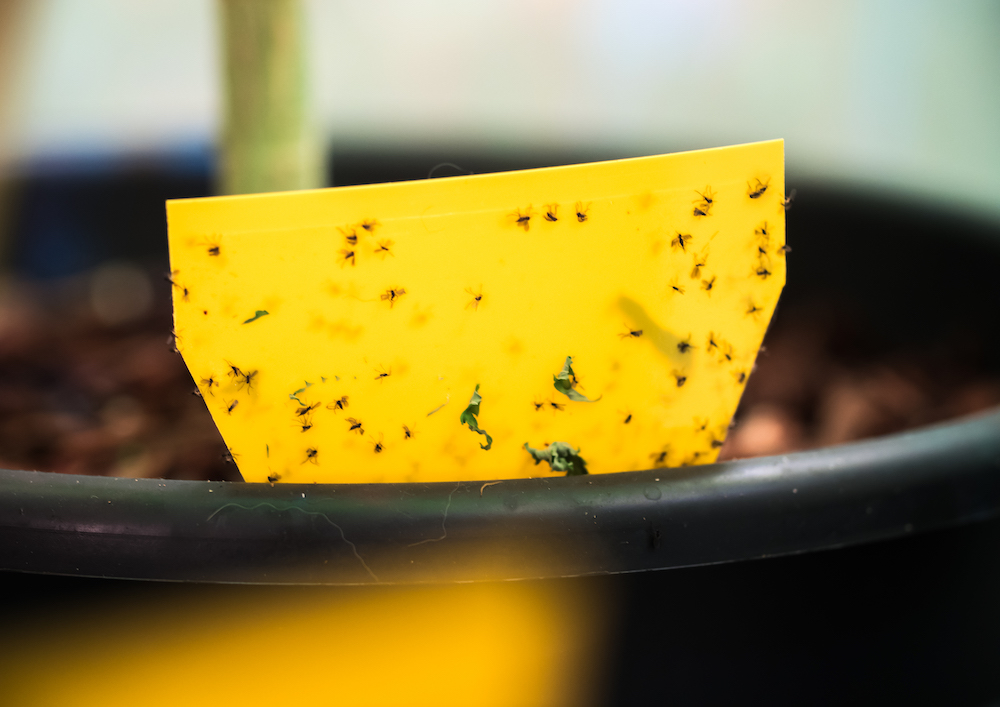
Fungus gnats are super tiny black bugs that often get mistaken for fruit flies. These tiny black bugs thrive in moist conditions and love to set up shop inside the soil of overwatered plants whose roots have begun to decay.
Clover mites
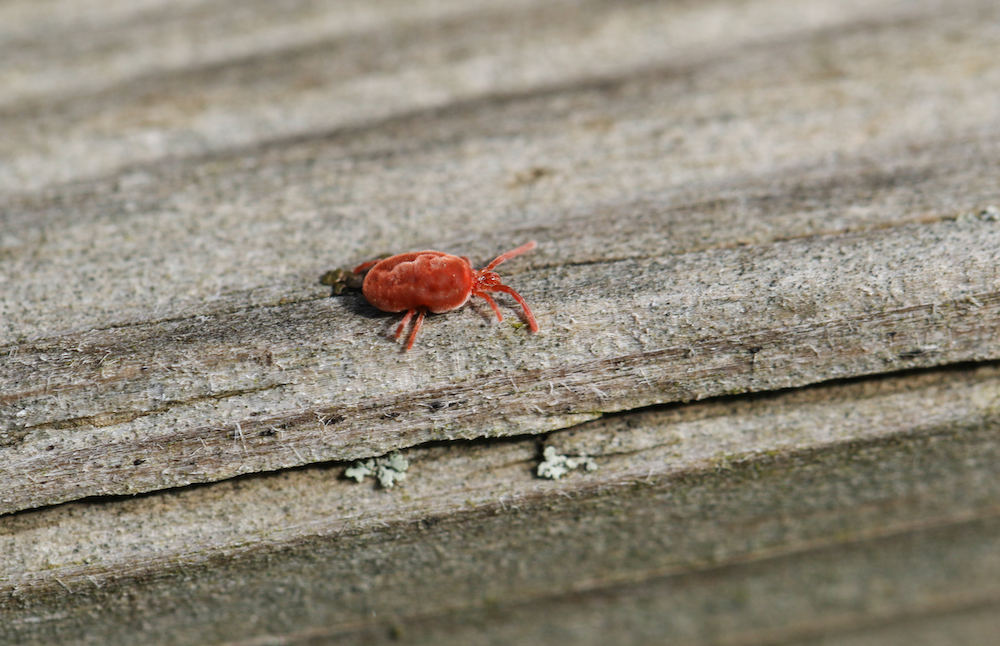
Have you ever spotted a group of itsy-bitsy red bugs on plants, scurrying across their leaves quickly? These tiny red bugs are called clover mites, and they’re one of the most common bugs to find on indoor houseplants. These critters tend to invade houses during the springtime and, thankfully, only reproduce outside, meaning they’ll likely dehydrate and die off quickly within the confines of your home.
What do you spray on plants to get rid of bugs?
While you can pick up an insecticidal bug spray from the store (like Dr. Killigan’s Six Feet Under Spray), creating a DIY insecticidal soap using simple, natural ingredients is easy!
Ahead are several houseplant bug spray options you can feel good about using, including a few DIY recipes you can make with ingredients you likely already own. Here's how to get rid of bugs on plants naturally.
1. Insecticidal soap
If you're dealing with soft-bodied insects like spider mites, aphids, whiteflies, and mealybugs, your best bet is to use an insecticidal spray for bugs.
Simply put 1/4 cup vegetable oil and one tablespoon liquid dish soap—free of bleach, degreaser, synthetic dyes, and fragrances, of course—in a spray bottle, then fill it to the top with warm water and shake. You can spray the mixture onto your plants once a week in order to combat pest issues.
If your plant is *super* infested with critters, consider isolating it away from the rest of your houseplants. If it’s not too late, quarantining pest-infested plants early can save the rest of your plants from infestation, too.
2. Neem oil
Another naturally occurring pesticide is neem oil. Neem oil is extracted from neem trees, which are native to India. Research1 has proven to be a super-effective natural pesticide,
The benefits of neem oil extend beyond the plant realm. Neem oil can be used as an antifungal agent for dandruff and foot fungus, can help heal and fade scars, and be used to spot treat acne.
"It has antimicrobial, antibiotic, and pest-killing properties," says Waldman.
3. Hydrogen peroxide
Hydrogen peroxide can be used to kill fungus gnats and other common bugs that plague houseplants, as well. When used sparingly, it can help plants grow by giving the roots added oxygen, too. Just be sure to dilute it—mix one teaspoon of hydrogen peroxide per cup of water in an empty spray bottle.
4. Essential oils
Jules Acree, the Austin, Texas-based wellness blogger and plant expert, likes to keep pests away with her own homemade bug spray. To make this indoor plant pesticide, she mixes one tablespoon of tea tree oil with one cup of water in a spray bottle.
Research has proven tea tree oil to be an effective pesticide against aphids, with 80 percent of pest mortality evaluated after use. For those looking for an easy, natural solution, Acree’s tea tree oil bug spray may be worth the try.
5. Diatomaceous earth
In order to keep pests at bay, Acree also tops the soil of all new plants with a pet- and kid-safe food-grade diatomaceous earth powder. This dries out the insects and their larvae, preventing a few solo bugs from reproducing into a full-blown infestation.
“If we see any kind of fungus or anything that looks funky on the plant, we just sprinkle it on top,” says Acree. “It helps so much.”
6. Dry out your plants after spraying and watering them
Pests like fungus gnats that thrive in moist soil in houseplants can be combated by simply taking away what they love: the moisture. (Sorry, gnats.) According to Susan Spanger, professional gardener and floral designer of Bloomful Floral Design, the best thing you can do in these types of situations is water your plants less often than you normally would in order to completely dry out the top couple inches of soil. "Watering frequently and keeping soil consistently damp is ideal for egg hatch and larvae survival,” she says.
Without moist soil, you're taking away fungus gnats' food source: fungi in the soil. By allowing it to dry out, The Sill says that major food source will be gone—and, because of that, the fungus gnats will be gone, too. Spanger says you can spread a half-inch of sand over the surface of your soil as well. "It dries out quickly and provides a scratchy surface that’s unappealing for adult fungus gnats looking to lay eggs," she says. Those houseplant bugs will be gone for good.
How to prevent houseplant bugs on indoor plants
After dealing with your first (or second, or even third!) houseplant bug infestation, you’ll likely never want to deal with one ever again.
Luckily, there are a few ways you can set your houseplants up for success and prevent new pests from invading your potted plants. Ahead are three ways to ward off future infestations.
1. Check and quarantine new plants
The best way to keep your houseplant bug-free is to treat every new plant like a potential pest hub. Even if a plant looks pristine, there might be bugs hiding between the leaves and in the soil. Repot any new plants you bring home with fresh soil, inspecting them for signs of pests as you go. This simple precaution can keep you from the headache of a mass infestation later on.
As soon as Acree gets home with a new plant, she puts it in the bathtub in order to do some pest control." You never know what might be lurking in the soil waiting to hatch a few weeks later, so you always want to be one step ahead," says Acree.
2. Keep your tools, pots, and hands clean
Maintaining cleanliness in your gardening space is paramount for keeping houseplant bugs at bay. If you repot a plant, be sure to put it into a clean pot. Regularly clean any tools you use, like pruning shears, before and after you use them. Doing this prevents the spread of harmful bacteria and other irritants between plants.
Plant doctor Maryah Greene recommends disinfecting your gardening tools with rubbing alcohol before tasks that can cause plant stress, such as propagating your plants. "Before you go in and cut your plant, or even switch between different plants, make sure [your shears are] clean, and they have a sharp edge," she says. Make sure you're handling your plants with clean hands, too.
3. Make sure you’re waiting long enough in between waterings
Certain plant pests, like fungus gnats, thrive in stagnant, damp soil. Allowing your plant’s soil to completely dry out in between waterings can help keep them at bay.
“At the shop, we make sure our plants are completely dry before we water them,” says Leonard-Segovia. “Most of the time, whenever you're having fungus gnats, it's because your soil is too moist. You need to let it dry out completely.”
FAQs:
Is it normal for indoor plants to have bugs?
Yes!
It’s totally normal for your indoor houseplants to attract bugs. After all, "plants are living things,” says Marino. “Pest infestation is totally normal and treatable.”
How can you tell if your indoor plants have bugs?
Plants that are infested with bugs usually have noticeable signs of distress, like yellowing, browning, or dropping leaves, or evidence of pest activity, like webs or partially eaten leaves.
"Each pest leaves a specific calling card that is unique to them," says Nick Cutsumpas, the plant coach and urban farmer behind Farmer Nick. "For example, spider mites spin thin webs at the base and underside of the leaf, while scale bugs attach themselves to stems and leave a sticky residue."
Some plant pests are too small to notice from far away, so make it a habit to inspect your houseplants for bugs while watering them.
What types of houseplants repel insects?
Plants that repel insects do it because the bugs don't like their scent.
"There are a lot of common herbs you can grow [in pots] in your windowsill that repel bugs, including rosemary, lemon balm, lemongrass, peppermint, and lavender," says Paris Lalicata, a customer experience coordinator at The Sill. Marigolds, petunias, and chrysanthemums are insect-repelling flowers. "Not only do they look pretty outside, but you can have big, flowering pots of them inside, too, and they look beautiful," says Lalicata.
What is a homemade bug repellent for houseplants?
There are several different houseplant bug sprays you can make at home with just a few simple ingredients.
One DIY bug spray recipe is to mix ¼ cup of vegetable oil, one tablespoon of liquid dish soap, and water. After adding the oil and dish soap to an empty spray bottle, fill the rest of the bottle up with water, and shake well.
Another involves tea tree oil, a natural insecticide. Drop 1-2 ounces of tea tree oil into an empty spray bottle, and fill the rest of the bottle with water.
Finally, you can use hydrogen peroxide as a DIY houseplant bug spray ingredient. Mix one teaspoon of hydrogen peroxide per every cup of water in an empty spray bottle. Shake well before use.
What should I wipe my plant leaves with?
Why wipe?
Wiping dust and dirt off of your plant’s leaves will help them get adequate amounts of sunlight. You can wipe the grime off of your plant’s leaves with a small amount of vinegar mixed with water and a microfiber cloth. Microfiber cloths can pick up tiny specks of dirt and dust that other cloths can’t pick up.
Alternatively, you can spray your plant’s leaves down with any of the houseplant bug sprays listed above to discourage pests from making a comeback.
Should I put Epsom salt on my plants?
Epsom salt can be helpful if your leaves are yellowing due to nutrient-deficient soil. Epsom salt gives plants adequate magnesium, which is important since magnesium makes up the central core of the chlorophyll molecules that are found in plant tissues.
An effective dehydrating agent, Epsom salt has also been known to repel snails, slugs, and common bugs.
Is hydrogen peroxide good for indoor plants?
Yes!
Hydrogen peroxide can be used to kill fungus gnats and other houseplant pests, and when used sparingly, it can even help plants grow by giving the roots extra oxygen. Just be sure to dilute it when making a homemade bug spray—use only one teaspoon of hydrogen peroxide per cup of water.
How do bugs spread between houseplants?
When plants are clustered together with some overlap, it's easy for pests to spread. Pests can crawl, jump, bounce, and fly onto neighboring houseplants easily. That's why it's important to quarantine infected or new plants so pests can't spread.
When should I give up on a dying houseplant?
Say the infestation really did a number on the plant. You've sprayed it down, cut off dying leaves, and repotted it in a new home with fresh soil, and yet, your beloved plant is on its last leg.
We know it sucks, but if you've exhausted all of your options, it may be time to pull the plug on your dying plant. "Think of this as an opportunity to test out new plants, as those empty planters will need to be filled," says Marino.
- Campos, Estefânia V R et al. “Neem Oil and Crop Protection: From Now to the Future.” Frontiers in plant science vol. 7 1494. 13 Oct. 2016, doi:10.3389/fpls.2016.01494
- Ahmed, Qasim et al. “Evaluation of Aphicidal Effect of Essential Oils and Their Synergistic Effect against Myzus persicae (Sulzer) (Hemiptera: Aphididae).” Molecules (Basel, Switzerland) vol. 26,10 3055. 20 May. 2021, doi:10.3390/molecules26103055
Loading More Posts...
